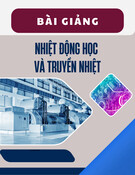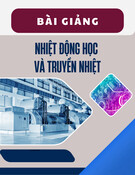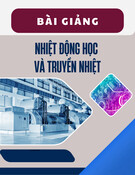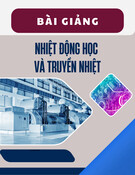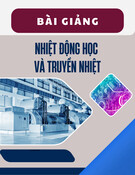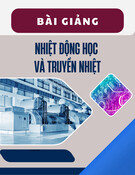
REGULAR ARTICLE
Innovative technologies in training and education for maintenance
team of NPPs
Róbert Soós, Bence Balogh, Gergely Dobos, Szabolcs Szávai
*
, and Judit Dudra
Bay Zoltán Nonprofit Ltd. for Applied Research, Engineering Division, Iglói street 2, Miskolc 3519, Hungary
Received: 21 August 2019 / Accepted: 2 September 2019
Abstract. Many industries, such as nuclear power plants, chemical industry, oil and gas industry have
dangerous working environments and hazardous conditions for employees. Maintenance, inspection and
decommissioning activities in these safety-critical areas mean a serious risk, downtime is a significant financial
loss. The Virtual Reality Training Platform is reflecting on this shortcoming, by providing the possibility for
maintenance workers to be trained and prepared for unexpected scenarios, and to learn complex maintenance
protocols without being exposed to unnecessary danger, like high temperature, radiation, etc. Employees can
have training for equipment maintenance, dismantling of facilities at closed NPP Units. One of the most
significant and unique added value of the immersive virtual reality solution is that the operator can experience
lifelike emergencies (detonation, shutdown) under psychological pressure, while all of the physiology indicators
can be monitored like eye-tracking. Users can work together anywhere in the world. A huge financial outage in
industrial production is the preparation and maintenance downtime, which can be significantly reduced by the
Virtual Training platform. This method can increase the accuracy, safety, reliability, and accountability of the
maintenance and decommissioning procedures, while operational costs can be reduced as well.
1 Introduction
In today’s industry, quick response and fast execution of
well-learnt procedures is critical. Many people work in
factories, where circumstances can be fatal in cases. For
example, nuclear power plants have spots where people can
only stay minutes due the harmful health effects of
radiation. Dangerous places are not only present in power
plants, there are also machines operating under water or in
high altitude. People who are working in these environ-
ments can get injured easily if they are not attentive
enough. However, maintenance of these machines has to be
done, so maintenance workers must be very efficient, fast,
precise and well-trained when they have to visit these
places. Even when circumstances are not dangerous, there
are several machines the faulty operation of which can
cause huge risk or loss of money [1,2]. These devices also
have to be maintained regularly and efficiently.
Due to these facts, workers have to be trained several
times and practice the movements very well before
participating in real missions. Nowadays, most of the
training is done on real copies of these machines, which are
not currently operating and the only purpose of them is to
help the training. Maintenance can be practiced in a very
realistic way using these, however, there are also several
drawbacks of the method. Ordering one more appliance can
be very expensive to buy and maintain, while often requires
much more space and occasionally operators as well. There
is usually only one training appliance which is not flexible,
so most employees can only get to use it few times if,
because there are many people to train and travel costs may
also be incurred.
The other problem is that while the appliance can be
studied very closely, their environment cannot really be
simulated even though this would be very important in
many fields of application, especially when the real work
has to be done in extreme circumstances. For example,
firefighters can be trained how to operate water pumps and
hoses efficiently but are not really able to feel the danger of
situation when there are real people and real fire [3].
Interactive computer-based trainings are also available
in many fields by now. It can be very cheap and flexible, but
not close to trying a real machine, as using a keyboard or
mouse cannot give the immersion needed to really
memorise a procedure or series of movements.
2 VR training platform
In the Virtual Reality Training Platform developed by Bay
Zoltán Nonprofit Ltd., the latest Virtual Reality technolo-
gies are used to help training of maintenance workers
(Fig. 1). It provides the possibility to practice complex
*e-mail: szabolcs.szavai@bayzoltan.hu
EPJ Nuclear Sci. Technol. 5, 21 (2019)
©R. Soós et al., published by EDP Sciences, 2019
https://doi.org/10.1051/epjn/2019053
Nuclear
Sciences
& Technologies
Available online at:
https://www.epj-n.org
This is an Open Access article distributed under the terms of the Creative Commons Attribution License (https://creativecommons.org/licenses/by/4.0),
which permits unrestricted use, distribution, and reproduction in any medium, provided the original work is properly cited.

working processes in advance, be prepared for unexpected
situations and receive knowledge of the area safely, without
any hazards. VR service can be applied for increasing the
experience and knowledge of the personnel in the field of
maintenance and operation in power plants, chemical
industry, refinery plants and production companies. On the
other hand, adequate operation training of high value
machinery without imposing any risk on the real
equipment state is also possible. The main purpose of
the platform is decreasing human factor, assuring safer
work and operation conditions and replacing expensive
training centres with a safe and innovative education
system with cost-effective periodic trainings.
Unlike in real appliance-based trainings, no special
equipment is needed, so this solution can be cheaper and
more flexible because a real machine does not have to be
purchased. However, it still provides realism and precision
unlike conventional computer programs and videos.
The other big advantage of computer support is that
everything can be measured precisely during the training.
For example the working time of maintenance or the
hardest part of the procedure can be easily detected as all
data can be recorded and analysed during the training
without the need for any human staff, but operators can
still help employees remotely during the training if
necessary and the system can be used anywhere, even at
the home of each employee, regardless of the distance from
the original working place.
3 Structure of the system
The virtual training system contains key elements both on
hardware and software side. Its most important part is a
PC-connected VR headset primarily Oculus Rift
(https://www.oculus.com/) or HTC Vive (https://www.
vive.com/)[4,5]which is worn by the user during the
training. The PC has to be powerful enough to maintain
high-enough frame rate (preferably 90 Hz or more [6]) while
rendering virtual reality content, or else users may feel
motion sickness [7].
VR headsets are usually used with controller interac-
tion, but this method is not immersive enough in most
cases. The main drawback is the fact that controllers are
designed to control computers and cannot represent
everyday actions and movements naturally [8]. In the real
life, people do not push buttons or grab joysticks to
assemble or disassemble machines and they will not be able
to learn or practise the real movements of the procedures if
they have to do so [9,10]. Immersion is a critical point of
virtual reality, which means that interaction methods also
have to be as life-like and accurate as possible. For
practising the assembly work, precise and latency-free
(real-time) motion detection is essential. Many different
devices are available on the market, however for our
application, LEAP Motion (https://www.leapmotion.
com/) provides the best solution [11], as its small sized,
non-contact optical motion sensor can be fixed onto the VR
headset itself and it does not disturb the free movement of
the user [12]. The sensor recognizes features of the human
hand and is able to build up a skeleton using the position of
the users’real hand and fingers. The software side of the
platform relies on Unity game engine (https://unity.com/)
[13,14], using which, this hand model gets transformed to
the virtual space with the help of LEAP Motion’s SDK.
However, rendering the models of the user’s own hands
in the virtual space and capturing its motion is not enough
to fully replace controllers. If the aim is not to overlap
virtual objects, but to be able to touch and grab them, an
interaction engine is also necessary. In the early days, we
used the default gesture based model provided by LEAP
SDK for this purpose, the biggest disadvantage is of which
is that it does not take physical qualities of the object into
account.
The user can grab the nearest object whenever the
“pinch”gesture is performed. Later, we began to develop an
own, more precise way for interaction, which determines
the fact of grabbing considering outlines, mass and size of
touchable objects and the angle of the touching fingers.
Using this method, users can not only see their own real
hand (Fig. 2), but are also able to work with it confidently in
virtual reality without the distraction of any other devices.
Another issue in virtual reality is getting around large
virtual spaces, which is also relevant in nuclear power plant
maintenance. The platform has multiple solutions for this:
on the one hand, workers can use a special “walker”called
Cyberith (https://www.cyberith.com/)[15], which uses
optical flow sensors to determine direction and intensity of
Fig. 1. VR trainig platform. Fig. 2. Virtual maintance of a valve in NPP.
2 R. Soós et al.: EPJ Nuclear Sci. Technol. 5, 21 (2019)

feet movement while users walk in place. On the other
hand, the popular “teleport”mechanism can also be
utilized. In this concept, users have to walk in the real
area, but when a door or special barrier is reached, they get
teleported to another spot, so there is no risk of outrunning
the real space.
The advantage of the treadmill (Fig. 3) is that the
operator can travel anywhere while they stay in the same
position in the physical space. However, the Cyberith we
use does not give full immersion in the field of simulating
the principle of walking. The step detection optical sensors
do not sense the elevation of the foot, but rather a sliding
motion, so this process is more like a controller: it has to be
learned and accustomed to its special use. Depending on
these artifacts, negative innervation may be developed
which does not correspond to reality.
Another solution to implement motion into virtual
reality is free movement. In this case, the operator walks in
the physical space on their own legs like in reality and does
not need to learn to walk again in virtual reality like on the
treadmill (Fig. 3). This method is much closer to real
spatial motion. For maximizing freedom, we used a
backpack computer because it is wireless with 2 h of
battery time and the operator is not limited by cables.
For the motion tracking, we used the Stereolabs ZED
(https://www.stereolabs.com/) stereo depth-sensing cam-
era and inertial sensor that allows us to map our
environment. By implementing SLAM (Simultaneous
Localization and Mapping) [16,17] algorithm for environ-
ment mapping and object and determine the actual
position of the user, which is widely used in navigation
and robotics besides VR and AR applications.
The disadvantage of the free movement solution used
for the VR training platform is the limitation of the
physical space. The boundaries of a platform set up in a
room will be determined by the physical dimensions of the
real environment. For this shortcoming, we implemented
teleportation as a workaround.
4 Advantages in training
As stated earlier, the main purpose of the above-mentioned
technologies is making training of maintenance workers
more efficient and flexible. A simulation model is a great
tool for training workforce because it can be done anywhere
in the training room even before the production line is built.
Software training with real data offers many benefits. If the
control software is integrated into the simulation model,
then the operator can acquire the same user interface as in
real life, thereby gaining a holistic view of the production
system. This allows them to study system parameters,
weaknesses, operator reactions, and early problems in order
to correct those.
Contrary to traditional procedure instructions and video
trainings, the virtual training platform can effectively
improve every moment of the practice, regardless of location
and time. There is no need to build or rent expensive
simulation halls, as virtually any environment can be easily
built, and later, individual elements can be easily replaced
and rearranged, making construction work cost-effective.
Another big advantage of the platform is flexibility.
The system is designed to be very easily maintainable and
extensible with many different modules. Training phases,
Fig. 3. Treadmill & SLAM.
R. Soós et al.: EPJ Nuclear Sci. Technol. 5, 21 (2019) 3

tools and the whole environment can be very easily
adjusted to very different situations if needed and can be
used in a wide range of industrial applications. For
instance, we successfully integrated a real-time radiation
calculation and visualisation module, developed by IFE
[18]. This extension can display the actual level of
radiation, position of shields and the radiation source as
well. A heatmap also makes it easy to distinguish
dangerous and safe spots and the dose of radiation an
employee would take when working in such environment
(Fig. 4). The real-time data stream makes it possible to
alert the user in case of a sudden radiation increase in the
facility or segments of the plant and helps finding a way to
leave the working zone avoiding dangerous spots. Using
this extension, nuclear decommissioning can be made not
only much easier and safer, but cheaper as well.
5 Other possible use-case scenarios
Aside from trainings, there are also some other efficient use-
case scenarios of using VR, some of which we would like to
introduce and discuss further.
In order for engineering teams to work in parallel
phases, 3D visualization tools are needed to improve
communication. The initial planning and design is always
done in front of monitors, but once the base parameters of
the facility and the list of objects to be placed are available,
the imaginary concept can be constructed and tested in
virtual reality. Rapid prototyping can be beneficial in any
industry and this way, it can be way more efficient.
Using the VR platform can also be beneficial in product
simulation [19,20] if the concept is constructed in virtual
reality before the real construction. In this field, we would
like to determine and test how our preliminary plans, flow
of materials would work, whether our control principles are
appropriate, the size and location of the buffer are well
estimated, and where the bottlenecks are. If the data that
we are working on is based on real data and comes from a
similar product family or from the same versions we can
turn it to our advantage in further applications. This is an
iterative analysis where engineers have to examine the
system from the most basic elements to determine what
parameters require further analysis or changes, for
example, to reduce cycle times. An important requirement
is that the simulation should be able to validate our
measurements and ideas, for which an easily parametric
and flexible model is essential.
6 Conclusion
The introduced Virtual Reality Training Platform is a
flexible framework, which has been successfully validated
in nuclear industry. The platform can be adapted for
several other purposes.
The more we fit a simulation platform into the
application environment, the easier it is to develop and
execute. The ability of virtual reality to deliver real-world
images of data, objects and environments that the user can
interactively influence in a realistic way opens up great
opportunities for industrial applications.
This technology can be utilized in a wide range of
industries (heat, water, chemical, etc.) It has great
potential in Chemical, Oil- and Gas Industries where all
maintenance training can be performed seamlessly in the
virtual world, without disrupting the daily operation. This
approach can significantly reduce cost by minimizing the
outage time.
The personal safety is guaranteed by the replacement of
the dangerous working environment high temperatures,
high voltage, radiation, lack of oxygen, etc. by Virtual
Reality. Using this immersive virtual reality solution, the
operator can experience lifelike emergencies under psycho-
logical pressure, and allows the operators to be properly
trained to make the right decisions even in the real world.
Operators need to be familiar with the layout of their
working environment and the actions and activities they
are expected to perform both in normal and emergency
conditions. Being properly trained would ensure that the
employees are prepared for any situation they may
encounter at their workplace and can safely perform their
duties, without delay.
Specially built training areas are hardly available and
expensive to maintain. The development of a VR training
platform is faster, flexible and more cost-efficient for
simulating real-life emergencies.
Fig. 4. Real-time radiation visualization.
4 R. Soós et al.: EPJ Nuclear Sci. Technol. 5, 21 (2019)

References
1. J. Ródenas, I. Zarza, M.C. Burgos, A. Felipe, M.L. Sánchez-
Mayoral, Developing a virtual reality application for training
nuclear power plant operators: setting up a database
containing dose rates in the refuelling plant, Radiat. Prot.
Dosim. 111, 173 (2004)
2. V.E. Whisker, A.J. Baratta, S. Yerrapathruni, J.I. Messner,
T.S. Shaw, M.E. Warren, F.T. Johnson, Using immoof
airtual environments to develop and visualize construction
schedules for advanced nuclear power plants, Proc. ICAPP 3,
4 (2003)
3. I. Heldal, H.C. Wijkmark, L. Pareto, Simulation and serious
games for firefighter training: Challenges for effective use,
NOKOBIT 24, 12 (2016)
4. P.R. Desai, P.N. Desai, K.D. Ajmera, K. Mehta, A review
paper on oculus rift-a virtual reality headset, arXiv:1408.1173
(2014)
5. D.C. Niehorster, L. Li, M. Lappe, The accuracy and precision
of position and orientation tracking in the HTC vive virtual
reality system for scientific research, i-Perception 8,
2041669517708205 (2017)
6. P. Richard, G. Birebent, P. Coiffet, G. Burdea, D. Gomez, N.
Langrana, Effect of frame rate and force feedback on virtual
object manipulation, Presence: Teleoperators & Virtual
Environments 5, 95 (1996)
7. M.E. McCauley, T.J. Sharkey, Cybersickness: Perception of
self-motion in virtual environments, Presence: Teleoperators
& Virtual Environments 1, 311 (1992)
8. J.S. Webb, B.E.T. Rogoza, P.W. Bristol, J.A., Higgins, S.S.
Talati, Y.Y. Chen, N.W. Konzen, U.S. Patent No. 9, 678, 566.
Washington, DC: U.S. Patent and Trademark Office (2017)
9. L. Motion, Leap motion. San Francisco, CA, USA, 2015
10. D.A. Bowman, R.P. McMahan, Virtual reality: how much
immersion is enough? Computer 40, 36 (2007)
11. M. Khademi, H. Mousavi Hondori, A. McKenzie, L.
Dodakian, C.V. Lopes, S.C. Cramer, Free-hand interaction
with leap motion controller for stroke rehabilitation, in
Proceedings of the extended abstracts of the 32nd annual
ACM conference on Human factors in computing systems,
2014, pp. 1663–1668
12. M.L. Ryan, Immersion vs. interactivity: Virtual reality and
literary theory, SubStance 28, 110 (1999)
13. T. Hilfert, M. König, Low-cost virtual reality environment
for engineering and construction, Visualization in Engineer-
ing 4, 2 (2016)
14. J. Jerald, P. Giokaris, D. Woodall, A. Hartbolt, A. Chandak,
S. Kuntz, Developing virtual reality applications with Unity,
in 2014 IEEE Virtual Reality (VR) 1–3(IEEE, 2014)
15. T. Cakmak, H. Hager, T. Cakmak, H. Hager, Cyberith
virtualizer: a locomotion device for virtual reality, in ACM
SIGGRAPH 2014 Emerging Technologies (ACM, 2014),
p. 6
16. J. Engel, J. Stückler, D. Cremers, J. Engel, J. Stückler, D.
Cremers, Large-scale direct SLAM with stereo cameras, in 2015
IEEE/RSJ International Conference on Intelligent Robots and
Systems (IROS) 1935–1942 (IEEE, 2015)
17. T. Gupta, H. Li, T. Gupta, H. Li, Indoor mapping for smart
cities–An affordable approach: Using Kinect Sensor and ZED
stereo camera, in 2017 International Conference on Indoor
Positioning and Indoor Navigation (IPIN) 1–8(IEEE, 2017)
18. I. Szőke, M.N. Louka, T.R. Bryntesen, J. Bratteli, S.T.
Edvardsen, K.K. RøEitrheim, K. Bodor, Real-time 3D
radiation risk assessment supporting simulation of work in
nuclear environments, J. Radiol. Prot. 34, 389 (2014)
19. T.S. Mujber, T. Szecsi, M.S. Hashmi, Virtual reality
applications in manufacturing process simulation, J. Mater.
Process. Technol. 155, 1834 (2004)
20. S. Ottosson, Virtual reality in the product development
process, J. Eng. Design 13, 159 (2002)
Cite this article as: Róbert Soós, Bence Balogh, Gergely Dobos, Szabolcs Szávai, Judit Dudra, Innovative technologies in training
and education for maintenance team of NPPs, EPJ Nuclear Sci. Technol. 5, 21 (2019)
R. Soós et al.: EPJ Nuclear Sci. Technol. 5, 21 (2019) 5








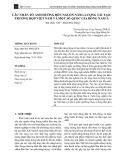
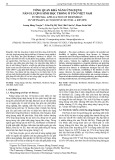
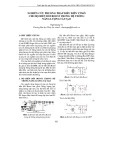
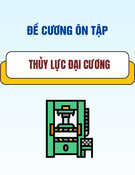
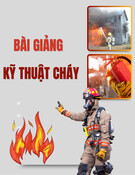
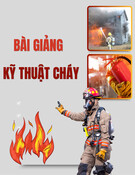
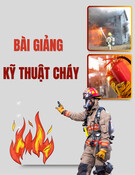
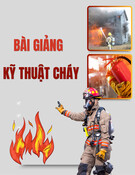

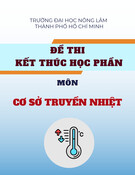
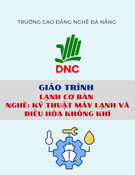
![Ngân hàng trắc nghiệm Kỹ thuật lạnh ứng dụng: Đề cương [chuẩn nhất]](https://cdn.tailieu.vn/images/document/thumbnail/2025/20251007/kimphuong1001/135x160/25391759827353.jpg)
